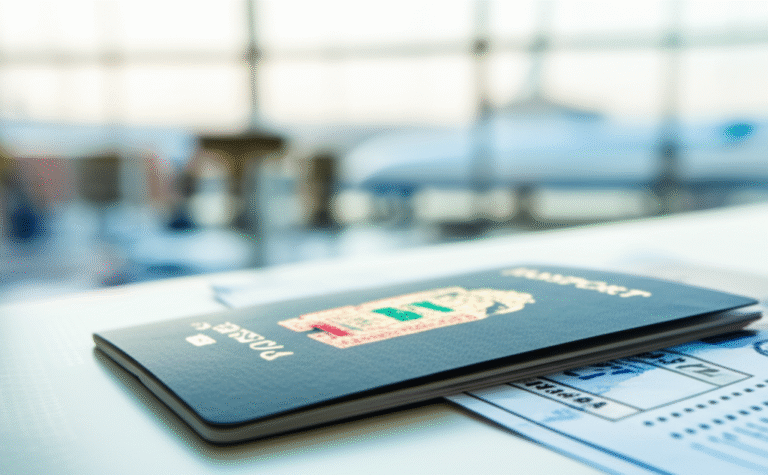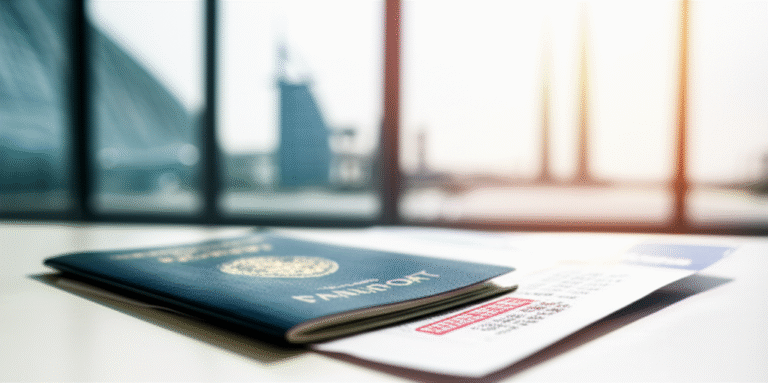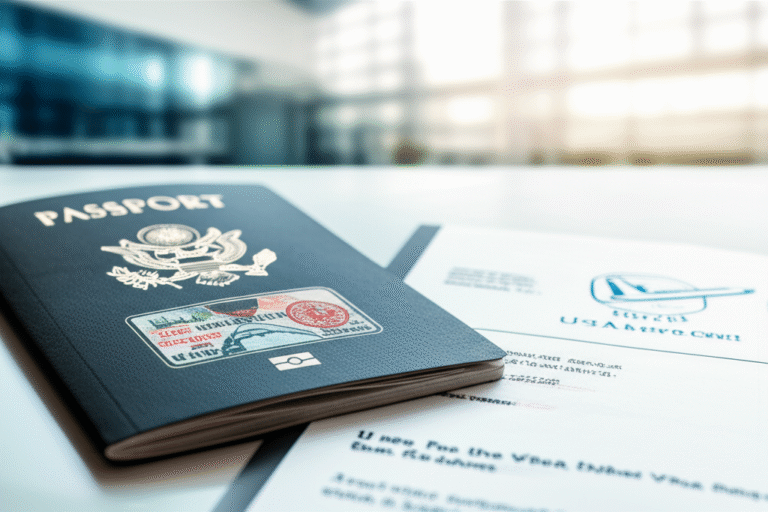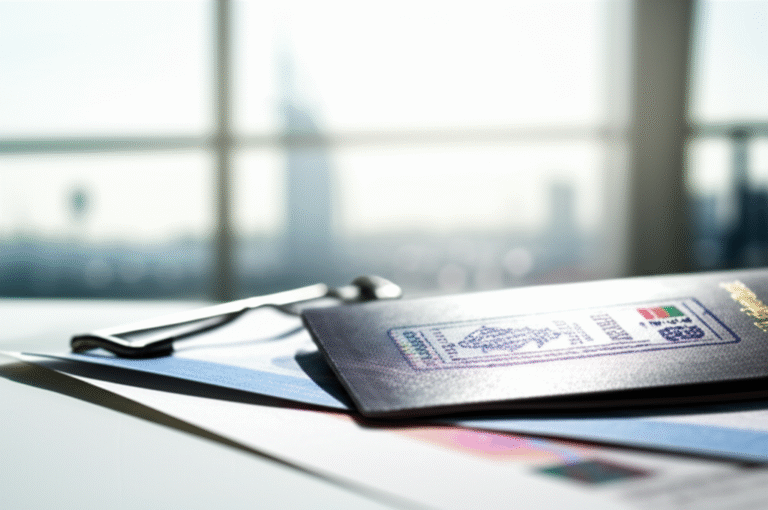Effortless OEC Exemption: How to Get Yours

Effortless OEC Exemption: How to Get Yours
By Amira Collins, uaestayinn
Categories: Finance, Lifestyle, Hotels, Technology, Travel, Visa
Getting your OEC exemption is simpler than you think! This guide will walk you through the easy steps to secure your exemption, saving you time and hassle, so you can focus on your travel plans.
Planning an international trip, especially if you’re a Filipino heading abroad for work or a long stay, often involves navigating various documents and requirements. One of these might be the Overseas Employment Certificate (OEC). While crucial for many, the OEC process can sometimes feel a bit daunting. But what if you don’t need one? That’s where the OEC exemption comes in! If you meet certain conditions, you can bypass the traditional OEC application. This guide is here to demystify the OEC exemption, making the process smooth and stress-free. We’ll break down who qualifies, what documents you might need, and exactly how to secure your exemption, step by step.
Understanding the OEC and Its Exemption
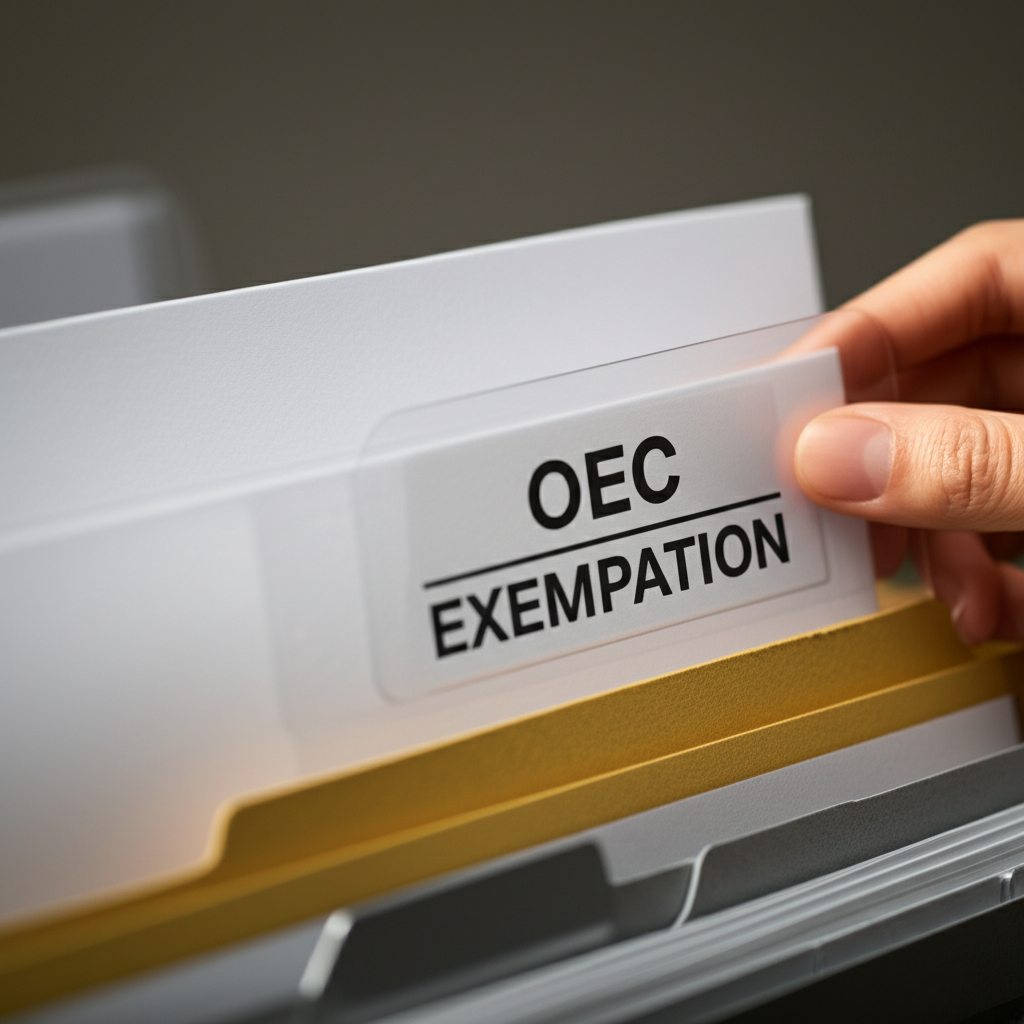
The Overseas Employment Certificate (OEC), often called the “exit clearance” or “pass” for Overseas Filipino Workers (OFWs), is a document issued by the Philippine Overseas Labor Office (POLO) or the Philippine Overseas Employment Administration (POEA). Its primary purpose is to confirm that a Filipino worker’s employment abroad is legitimate and in compliance with labor laws, both in the Philippines and in their host country. It also serves as proof of exemption from the travel tax and airport terminal fees for OFWs.
However, not everyone who works abroad needs to go through the full OEC application process. The OEC exemption was introduced to streamline the process for OFWs who are considered “balik-manggagawa” (returning workers) and meet specific criteria. These exemptions are designed for individuals who have already undergone the OEC process for their current employer and job contract and are simply returning to their overseas employment after a vacation or business trip to the Philippines. This recognition acknowledges that their employment details have already been verified.
The beauty of the OEC exemption is that it simplifies your journey. Instead of a potentially lengthy application process involving appointments, fees, and document submissions to POLO/POEA, you can often secure your exemption with minimal fuss, sometimes even online or directly at the airport. This saves valuable time, especially if you have limited days in the Philippines or are rushing back to your job abroad.
So, who exactly falls under this exemption, and how can you get yours? Let’s dive into the details to make sure you’re well-prepared for your next international travel.
Who Qualifies for an OEC Exemption?
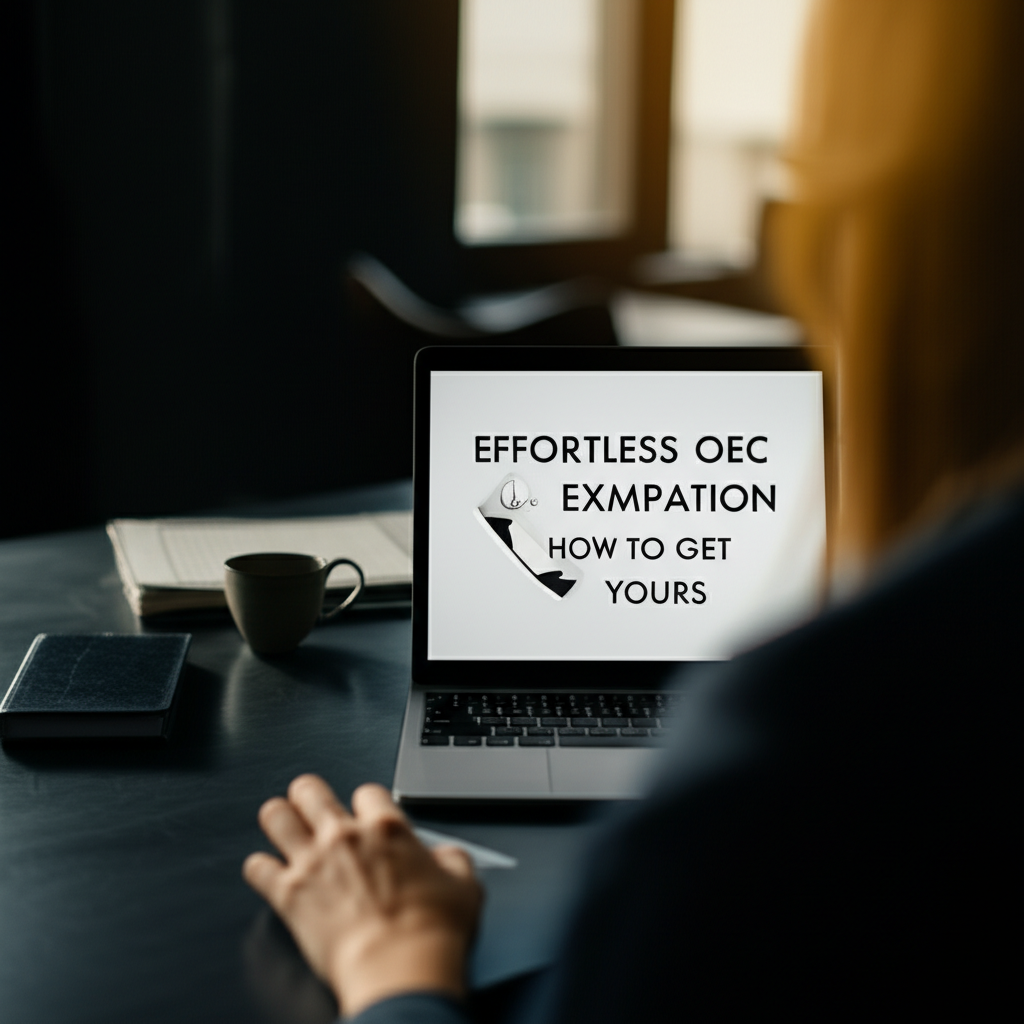
The primary goal of the OEC exemption is to make life easier for OFWs who are returning to their existing overseas employment. The Philippine government, through the Department of Labor and Employment (DOLE) and the POEA, has outlined specific categories of individuals who are eligible for this streamlined process. Understanding these categories is the first crucial step to determining if you can skip the full OEC application.
Generally, an OFW is considered a “balik-manggagawa” if they are:
- Currently employed abroad with a valid work visa and employment contract.
- Returning to the same employer and the same job position.
- Returning within a specific period (often within 90 days) after a vacation or business trip to the Philippines.
Here are the most common categories of individuals who qualify for an OEC exemption:
1. Returning OFWs with Valid Existing Work Visas and Contracts
This is the most common scenario. If you have an active employment contract with your foreign employer and a valid work visa that allows you to return to your job in the host country, you likely qualify. This means your initial OEC (or its equivalent if you were exempted previously) and work permit are still valid, and you are not changing employers or job roles.
2. OFWs on Vacation or Business Trips
If you are in the Philippines for a temporary visit, such as a vacation, to see family, or for a short business trip related to your overseas employment, and you intend to return to your job abroad, you can avail of the exemption. The key here is that you are not terminating your employment abroad and are simply returning to continue it.
3. Government-to-Government Hired Workers
Filipinos hired through bilateral agreements between the Philippine government and foreign governments (e.g., certain healthcare professionals or skilled workers in specific countries) may also be eligible for exemptions, depending on the specific agreements and POEA regulations.
4. Seafarers (On Leave)
OFWs working on international sea vessels (seafarers) who are on vacation or leave and are returning to their ship or to join a new vessel under the same principal/manning agency are typically exempted from the OEC requirement.
5. OFWs with Contracts Processed and Verified Prior to Departure
If your employment contract was already processed and verified by the POEA (or POLO) before your initial departure for overseas employment, and you are returning to the same employer and contract, you are usually exempt.
Important Note: While these are the general categories, it’s always best to check the latest guidelines from the Philippine Overseas Employment Administration (POEA) or the Department of Labor and Employment (DOLE), as regulations can sometimes be updated.
Required Documents for OEC Exemption
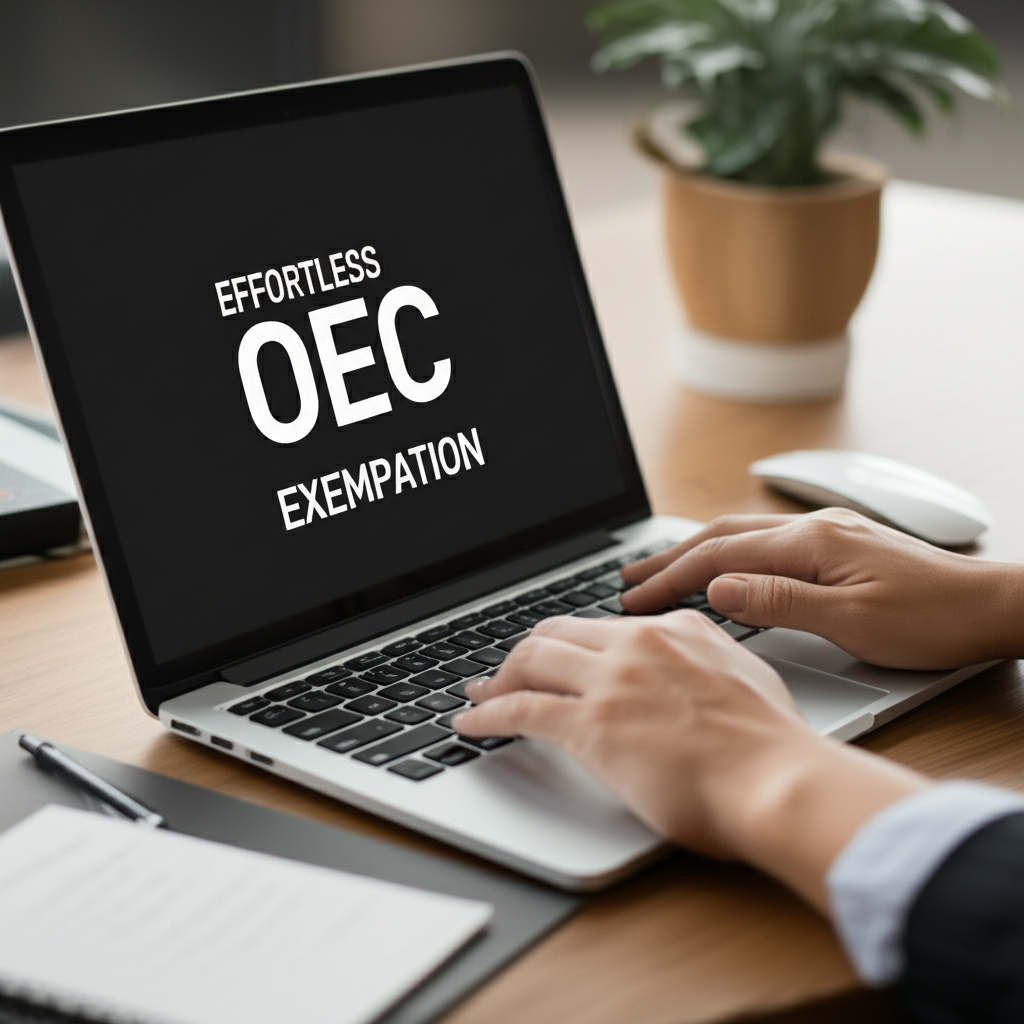
The beauty of the OEC exemption lies in its simplified documentation requirements. Unlike the full OEC application, you won’t need to gather as many papers. However, having the right documents ready is essential for a smooth process. The specific requirements can vary slightly depending on how and where you are processing your exemption, but here’s a list of commonly needed documents:
Essential Documents:
- Valid Passport: Your passport must be valid for at least six months beyond your intended stay in the Philippines.
- Valid Work Visa/Re-entry Permit: This is crucial evidence that you are legally permitted to work abroad and are returning to your job. It should be stamped on your passport or be a separate visa document.
- Proof of Onward Travel: This is typically your plane ticket or flight booking showing that you are returning to your country of employment.
- Employer’s Letter or Contract: A letter from your employer confirming your employment, indicating your position, and stating that you are returning to them is often required. Alternatively, a copy of your current employment contract may suffice.
Potentially Needed Documents (Depending on Situation):
- Previous OEC or Exemption Proof: If you have had an OEC or an exemption before, bringing a copy can be helpful, especially if you are returning to the same employer.
- Valid Philippine Overseas Employment Administration (POEA) Verified Contract: If you are required to have a POEA-verified contract, bring a copy.
- Seafarer’s Identification Document (SID) and Seafarer’s Data Sheet (SDS): For seafarers, these documents are essential.
- Valid Philippine Passport: This is your primary identification.
Pro Tip: Always make photocopies or have digital backups of your important documents. It’s better to have them and not need them than to need them and not have them!
It’s worth noting that the POEA has been working on digitizing services, so some documents might be accessible or verifiable online. Always check the latest requirements on the official POEA website.
Step-by-Step Guide: How to Get Your OEC Exemption

Securing your OEC exemption is designed to be straightforward. The process typically involves verifying your status and presenting the necessary documents at a designated point of processing. Here’s a step-by-step breakdown of how you can get yours:
Step 1: Confirm Your Eligibility
Before anything else, reconfirm that you fall under one of the exemption categories mentioned earlier. Ensure you have a valid work visa, an active employment contract, and are returning to the same employer and position. If you’re unsure, a quick call or email to the POEA or your POLO can provide clarity.
Step 2: Gather Your Documents
Collect all the necessary documents as listed in the previous section. Double-check the expiry dates on your passport and work visa. Having everything organized will make the subsequent steps much quicker.
Step 3: Choose Your Processing Channel
There are usually a few ways you can obtain your OEC exemption. The most common methods include:
Option A: Online Processing (if available)
The POEA has been developing online portals for various services. If an online option is available for OEC exemptions, this is often the most convenient way. You would typically need to create an account on the relevant POEA portal, fill out an online application form, upload scanned copies of your documents, and pay any associated fees. Once approved, you might be able to download and print your exemption confirmation.
Where to look: Visit the official POEA website for any available online services.
Option B: Airport Processing
For many OFWs, particularly those on temporary visits to the Philippines, processing their OEC exemption directly at the airport before their flight is the most practical option. This is often referred to as the “Balik-Manggagawa” or “On-Site” processing.
How it works:
- Arrive at the airport well in advance of your flight.
- Proceed to the dedicated counter for OFW processing (often managed by POEA representatives or authorized personnel).
- Present your gathered documents to the processing officer.
- They will verify your documents and your eligibility for exemption.
- If everything is in order, they will issue your OEC exemption confirmation, which you will present along with your passport and boarding pass at the immigration counter.
Important Considerations for Airport Processing:
- Allow Extra Time: Airport queues can sometimes be long, so give yourself ample time (e.g., 3-4 hours before your flight).
- Specific Airport Counters: Ensure you know which counters are designated for OFW processing at your departure airport (e.g., NAIA Terminal 1, 2, or 3).
- Fees: There might be a minimal processing fee for the OEC exemption, usually payable at the airport.
Option C: Processing at POEA/POLO Offices (Less Common for Exemptions)
While less common for returning workers seeking exemptions, in some specific cases or if you are near a POEA or POLO office, you might be able to process your exemption there. This typically requires an appointment and follows a similar document verification process.
Step 4: Verification and Confirmation
Once you submit your documents, the processing officer will review them. They will check your passport details, visa validity, employment status, and onward travel plans. If all is in order, they will endorse your exemption.
Step 5: Receive Your OEC Exemption
You will receive a printed OEC exemption certificate or an endorsement on your passport. This document is your proof that you are exempted from the full OEC process and the travel tax. Keep it safe and ready to present to immigration officers.
Step 6: Present at Immigration
When you proceed to the Philippine immigration counter for your departure, present your passport and the OEC exemption confirmation. The immigration officer will verify it before allowing you to board your flight.
By following these steps, you can navigate the OEC exemption process with confidence and ease, ensuring a smooth departure back to your overseas employment.
Tips for a Smooth OEC Exemption Process
To ensure that your OEC exemption process is as effortless as possible, a little preparation and foresight go a long way. Here are some helpful tips:
- Stay Updated: Regulations and procedures can change. Always check the official websites of POEA and DOLE for the latest requirements and advisories before your travel.
- Be Early for Airport Processing: If you’re opting for airport processing, arrive at least 3-4 hours before your flight. This buffer time accounts for potential queues and ensures you don’t miss your flight.
- Organize Your Documents: Keep all your required documents in one place, easily accessible. Photocopies are a good backup.
- Know Your OFW Status: Understand whether you are a “balik-manggagawa” or need a full OEC. If in doubt, consult the authorities beforehand.
- Check Your Visa Validity: Ensure your work visa or re-entry permit is valid and will cover your intended stay abroad after your vacation.
- Have Your Onward Ticket Ready: This is a key document to prove you are returning to your overseas employment.
- Prepare for Fees: While the exemption process is cheaper than a full OEC, there might be a small processing fee. Have some cash ready for this purpose.
- Be Polite and Clear: When interacting with processing officers, be clear and polite. Provide the information they need accurately.
- Contact POEA/POLO if Unsure: If you have specific questions about your eligibility or documentation, don’t hesitate to reach out to the POEA hotline or your nearest POLO.
- Consider Online Options First: If POEA offers a reliable online portal for exemptions, explore this option for maximum convenience.
By keeping these tips in mind, you can significantly reduce any potential stress associated with obtaining your OEC exemption and enjoy a smoother travel experience.
Frequently Asked Questions (FAQs) about OEC Exemption
We’ve gathered some common questions about OEC exemptions to provide you with quick, clear answers. Think of this as a chat over coffee, where we make things easy!
Q1: I’m going back to my job abroad after a vacation. Do I absolutely need an OEC or can I get an exemption?
A1: Typically, if you are returning to the same employer and the same job position with a valid work visa, you are considered a “balik-manggagawa” and can avail of the OEC exemption. This means you can often process it at the airport before your flight instead of going through the full OEC application.
Q2: How long is my OEC exemption valid for?
A2: The validity of an OEC exemption usually aligns with your travel plans. It is generally considered valid for your immediate return trip to your country of employment. For practical purposes, it’s best to process it close to your departure date.
Q3: What if I changed employers or my job contract is different? Can I still get an exemption?
A3: Generally, no. If you have changed employers or your job contract details (like position or salary) have changed significantly, you likely need to undergo the full OEC application process. This ensures your new employment details are properly documented and verified.
Q4: I’m a seafarer on vacation. How do I get my OEC exemption?
A4: Seafarers on vacation who are returning to their vessel or joining a new one with the same manning agency are usually exempted. You’ll typically need your Seafarer’s Identification Document (SID), Seafarer’s Data Sheet (SDS), passport, and proof of onward travel. Processing can often be done at the airport.
Q5: Is there a fee for the OEC exemption?
A5: While the OEC exemption is much simpler and often less expensive than a full OEC application, there might be a minimal processing fee, especially when processed at the airport. It’s always good to have a small amount of cash ready, just in case.
Q6: Can my family members travelling with me also get an OEC exemption?
A6: The OEC exemption is specifically for Overseas Filipino Workers (OFWs) returning to their employment abroad. Accompanying family members who are not OFWs themselves and are not travelling for work purposes would not need an OEC or its exemption. They would follow standard Philippine immigration procedures.
Q7: I forgot to get my OEC exemption at the airport. What should I do?
A7: If you realize you’ve missed your chance for an OEC exemption at the airport, don’t panic. You may need to contact the POEA or the nearest POLO office in your country of employment to process a new OEC or inquire about your options. It’s always best to try and secure it before departure to avoid issues.
Conclusion: Travel with Confidence
Navigating the requirements for international travel can sometimes feel like a maze, but understanding the OEC exemption is a significant step towards simplifying your journey. By confirming your eligibility, preparing your documents, and knowing your processing options, you can secure your exemption with ease and confidence. Remember, the OEC exemption is a benefit designed to make your return to overseas employment smoother, saving you valuable time and reducing stress.
Whether you’re heading back home for a brief visit or just returning to your work abroad, knowing how to get your OEC exemption makes all the difference. Arm yourself with this knowledge, stay updated on the latest guidelines, and travel smart. Your effortless journey awaits!

